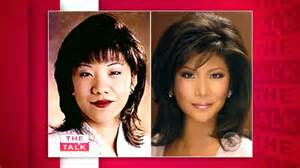
The Asian eyelid has some very significant differences from the Western eyelid due to the amount of fat in the upper eyelid and the frequent lack of a well defined eyelid crease. The upper eyelid crease is formed by the levator muscle, which lifts the eyelid, but in the Asian eyelid the fold may be missing due to the fat. This creates a flat appearance from the lashline to the brow and makes the eye looks heavy or partially closed. In addition, there is a fold of skin at the inner edge of the eyelid close to the nose known as an epicanthal fold which makes the eye look smaller and also pushes the eyelashes down.
The Asian double eyelid surgery is done to create the appearance of a fold on the upper eyelids if it does not exist or to adjust the height of the fold that is present in cases of eyelid asymmetry. Even though the procedure just creates an eyelid crease, its effects can be dramatic as it opens up the appearance of the eyes and makes them look bigger.

In admitting that she had the procedure, Julie Chen discussed the reason she had it done which is both revealing and consistent with the known motives amongst Asians for getting the double eyelid procedure. Because she was once told she would never be a TV anchor because she was Chinese. Her intention was to simply have bigger eyes so she didn’t look sleepy or angry in her interviews on camera…not to look less Chinese or Asian. This was not about trying to look more Western but to have a more alert eye look.
Dr. Barry Eppley
Indianapolis, Indiana


